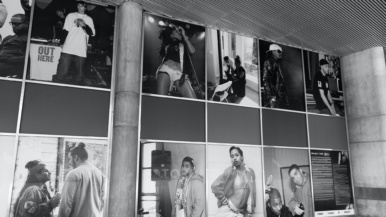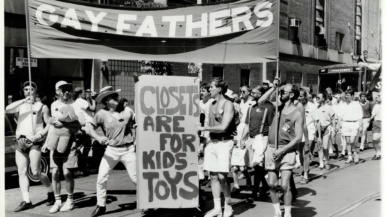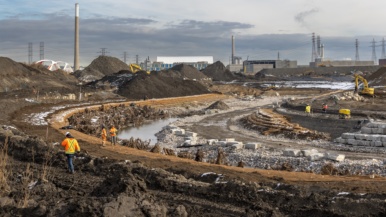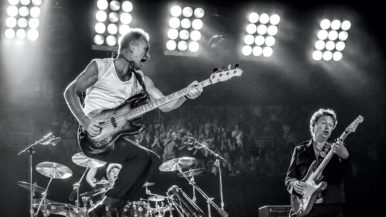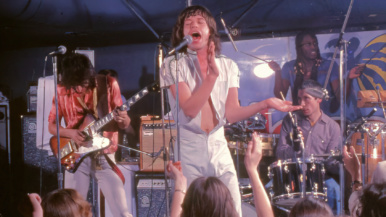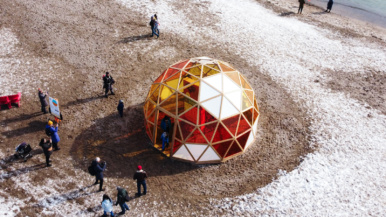Take a peek at some of the fascinating photos that Ryerson received from the New York Times’s archives

Late last year, the Ryerson Image Centre got its hands on a gallerist’s dream: 25,000 images from the New York Times’s archives. The collection, donated by GTA real estate executive Chris Bratty, documents how Canada was covered throughout the 20th century. After a year of sifting and scrutinizing, the gallery is featuring 230 photos from the collection in a new exhibition, The Faraway Nearby, which runs from Wednesday, September 13 to December 10.
“It was critical for us that these photos not just stay put away in boxes,” says Paul Roth, the RIC’s gallery director. “A lot of archives and libraries think of themselves as repositories. We think of ourselves as a laboratory. The images have to be accessible, literally pulled out, put on the wall, circulated, published—any way we can think of to get them out.” Here, we reveal the stories behind some of the photos in the collection.

Royal Visit • Circa 1978
Mayor Ernest Hawkins gives Princess Elizabeth a tour of Niagara Falls during her first royal visit to Canada, the year before she became Queen.

Howe and Gretzky • Circa 1978
Gordie Howe and Wayne Gretzky attend a World Hockey Association meeting in New York. The photo was airbrushed and cropped to feature just Gretzky, who, despite being only 17 at the time, was beginning to eclipse Howe.

Quebec Conferences • 1944
Winston Churchill, Franklin D. Roosevelt and W. L. Mackenzie King speak to reporters after the second of two Quebec Conferences, high-level military summits that took place at the Citadelle of Quebec in Quebec City.

Waterton Lakes National Park • Circa 1958
In a photo likely destined for the Times’ travel section, RCMP Corporal W. W. MacLeod shows the Albertan landscape to wide-eyed Californian tourists.

Lake Placid • 1932
The Canadian Olympic women’s speed skating team poses playfully at the Winter Games in 1932, the first year they were allowed to participate. The two women on the right were cropped out for publication.

Château Frontenac • Circa 1930s
This all-ice, 150-metre toboggan slide stretches along Quebec City’s Dufferin Terrace to the Château Frontenac.

Montreal Harbour • 1915
After arriving from Winnipeg and Western Canada, men of the 28th and 31st battalions await transport in Montreal, just another stretch in their long journey to the war zone.

Chief Dan George • 1971
Tsleil-Waututh Nation actor Chief Dan George received Oscar and Golden Globe nominations for Best Supporting Actor in Little Big Man, a film satirizing the western genre.

The Montreal Bounce • Circa 1924
Looking through images from the 19th and early 20th century, Roth found a surprising number of shots of people being tossed into the air as a sort of hazing or initiation ritual. “Prior to seeing this photo,” says Roth, “I’d never heard of the ‘Montreal bounce.’” The act in this particular picture earned its name from the Montreal snowshoe club, which would fling new members, recognized guests and race winners into the air.

Banff Springs Hotel • 1928
This shot was used as a promotional image for Banff tourism—though it’s more than a little spooky. “What fascinates me is the mysterious isolation of these figures,” says Roth. “Who are these people? What is this strange place where there’s a swimming pool in the middle of this landscape?”

Toronto Maple Leafs in the trenches • 1939
Hockey is one of the most common subjects in the New York Times collection. In this shot from World War II, Leafs players march through a trench at a machine-gun target range during a military training session (the exact location is unknown). The Leafs were in constant training, in case they ever got called to duty. “I love the sense that one team was as important as the next team,” says Roth. “Being Maple Leafs meant that these people were tribally associated with their team no matter what… They might move onto a conflict of a different type, one with higher stakes, but at the same time, they draw their identity from their relationship with their teammates.”

The Calgary Stampede • 1951
In this shot, Chief Little Dog of the Kainai Nation and his wife, Antoinette Heavy Shield of the Siksika Nation, present a gift to Princess Elizabeth and the Duke of Edinburgh before the 1951 Calgary Stampede. By this point, Roth says, the roles of the leaders in the photo were largely ceremonial.

Peace protestors at an Easter Parade • 1959
“My first impression was: look how well-dressed these protesters are,” Roth says, chuckling. Most of these protesters were part of the Student Christian Movement at the University of Toronto. The group was marching against the Cold War arms race and calling on Canada to help bring about peace.

Trudeaumania • 1968
The man in this photograph serves as a stand-in for the viewer, wondering what this wall of Trudeaus is all about. Back then, Trudeaumania played out in the newspapers, which published images of Pierre Trudeau over and over again. “Now you’re more likely to see people taking selfies with Justin,” says Roth. “But in many ways, I think it’s the same phenomenon.”

Buffy Sainte-Marie • Circa 1971
As a musician and activist, Buffy Sainte-Marie became emblematic of Indigenous issues, environmentalism and the rights of women. “Sadly, there aren’t a huge number of Indigenous people photographed in this collection who would immediately communicate to a broad public audience the political strength, forbearance and perseverance of Canada’s Indigenous populations,” Roth says. “But Sainte-Marie does.”

Margaret Atwood • Circa 1989
“This picture was really made for putting on a large public building,” Roth says. “It’s a close-up, stunningly direct and charismatic.” The photo was taken around the time Atwood’s seventh book, Cat’s Eye, came out. At the time, Atwood was already 30 years into her career and had established herself as one of the greats in Canadian literature.

David Suzuki • Circa 1993
When this photo was taken, Suzuki was teaching at the University of British Columbia’s Sustainable Research Development Institute and hosting the PBS miniseries The Secret of Life. As a scientist, says Roth, Suzuki made academic subject matter accessible to a large audience. He continues that today, urging for public understanding of climate change and fighting for environmental protection.
